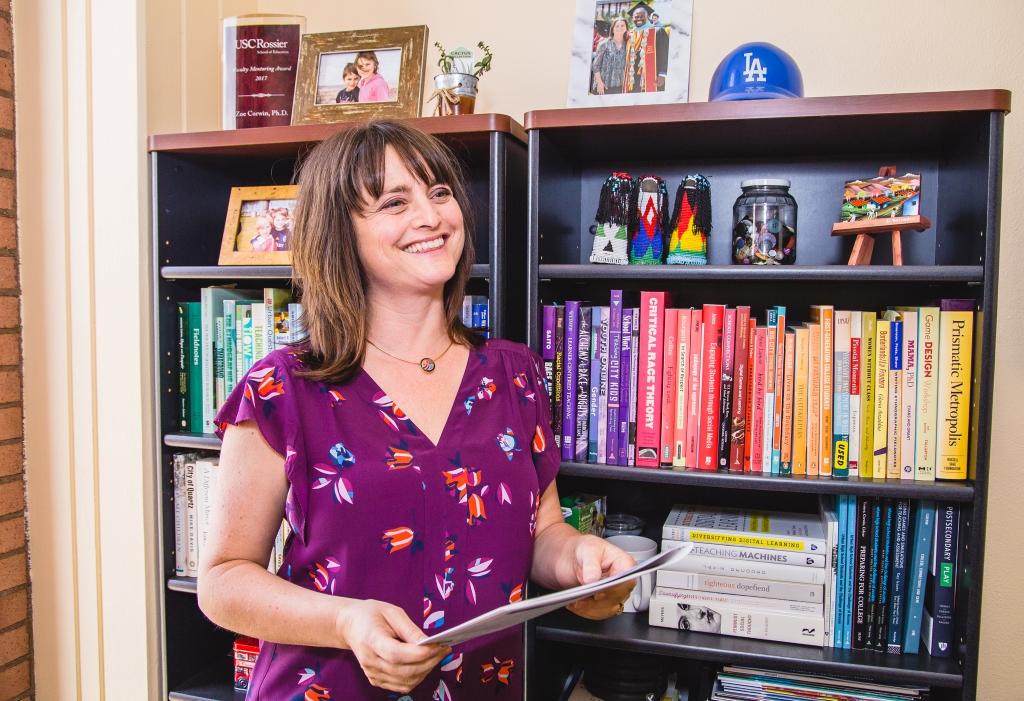
Zoë Corwin: I Had No Idea How Deeply Compelling the Research Would Be
For the past decade and a half my scholarship has been situated in the field of college access and success. Most recently I have been focused on the potential of games, gamification strategies, and social media to promote postsecondary opportunities for at-promise students. The Digital Equity in Education project at the Pullias Center has worked with schools, school districts, non-profits, industry, and state and federal agencies in an effort to promote equitable pathways to higher education for students from low-income and minoritized backgrounds. I have collaborated on research with a wide range of individuals and organizations from middle and high school students, to teachers, counselors, administrators, district staff, to non-profits, federal agencies, foundations, and tech companies. Until just over a year ago, however, I had not collaborated with skateboarders.
Enter the Tony Hawk Foundation.
The Tony Hawk Foundation (THF) approached the Pullias Center because they wanted guidance on how to better serve the young people using skateparks they had helped build across the United States. Even as a non-skater, I knew this would be a fun project to take on. I had no idea, however, how deeply compelling the research would be.
What we learned from skateboarding youth was profound. Study data illustrate how skateboarding bolsters mental health and facilitates community. Skaters of color explained feeling safer and more supported in the skate community. Skaters clearly articulated skills they learned through skating, such as persistence (skaters will practice a trick hundreds of times until they land it), problem solving, intergenerational and cross-cultural communication. Our new report on the research suggests a radically different picture of what it means to be a skater than the current commonly held perceptions.
From a research perspective, the study was innovative, challenging and invigorating. To work alongside other scholars who were deeply committed to employing a critical race framework in order to better understand how skateboarders from diverse backgrounds make sense of their lives elevated all aspects of the study. As one example, we grappled with how to connect with skaters from minoritized backgrounds and skaters who identified as female, which is much easier to do through selective case study sites and qualitative data collection than through an online survey disseminated through social media and email outreach. We strategized about how to entice respondents to complete the survey if we weren’t standing in front of them. We knew that the survey interface had to be engaging (we embedded high quality skate images throughout and iterated on the language of the survey questions) and we offered a raffle incentive (Birdhouse skate decks, Bones wheels & bearings, even cash) for survey completion. We made innovative use of Instagram, video appeals uploaded by skate influencers on YouTube, and QR codes on postcards. We partnered with non-profits serving the skate community. As a result, our results convey a multi-faceted picture of skateboarders from varied backgrounds. We are deeply appreciative to the Tony Hawk Foundation for trusting our process.
In the context of higher education research, our study findings shine a light on how important it is to push back against “one-size-fits-all” models – and how critical it is to listen to young people, to meet them where they are. The study is about skateboarding youth, but the lessons learned are transferable to anyone who doesn’t fit a traditional mold.